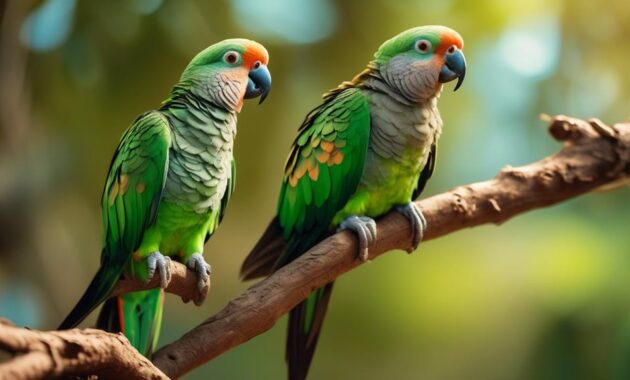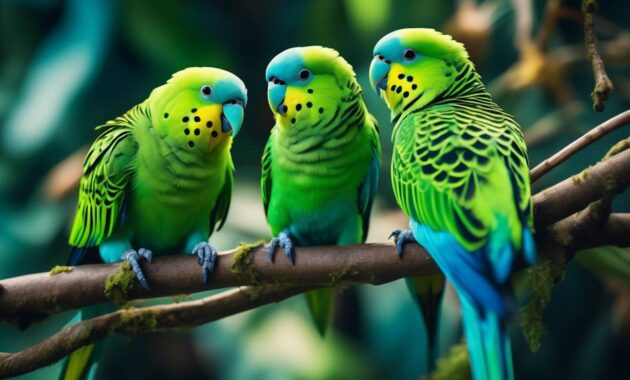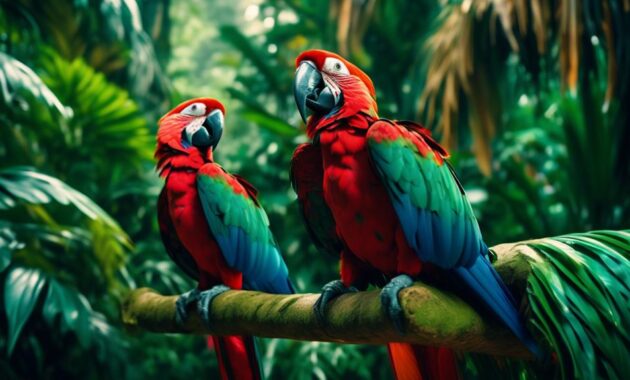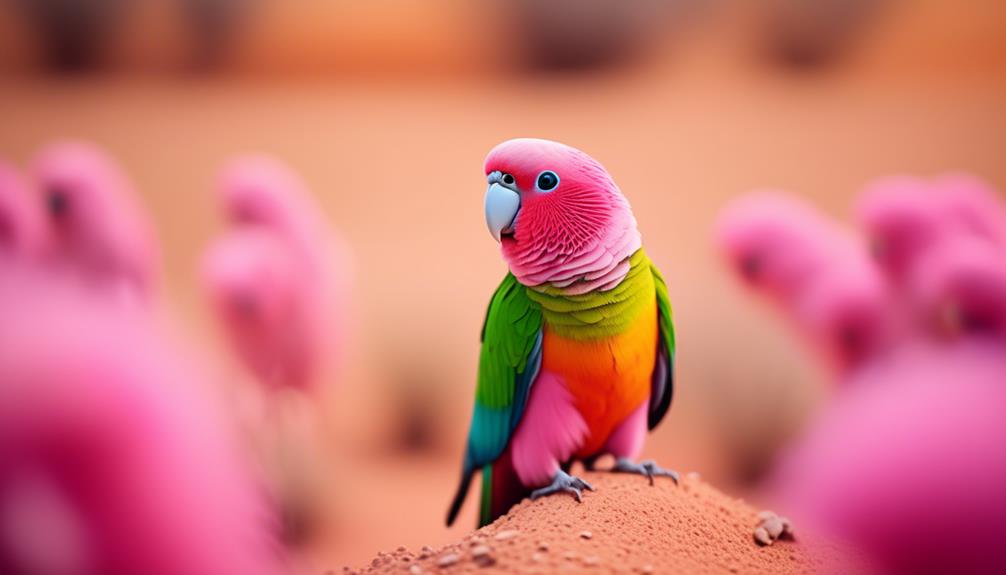
Bourke’s Parakeet, an alluring avian wonder from down under, captivates with its stunning shades of pink. This dazzling beauty hails from remote regions of Australia and has enchanted bird enthusiasts for centuries.
But what makes this parakeet truly special? From its natural habitat preferences to its unique physical features, there is much more to uncover about this charming creature.
So, let’s embark on a journey to explore the captivating world of Bourke’s Parakeet and discover the secrets behind its rosy allure.
Key Takeaways
- Bourke’s Parakeet is a small and long-lived bird species native to remote regions of Australia.
- They have a dazzling rosy pink plumage, with additional brown and blue details.
- Bourke’s Parakeets are well-adapted to their habitat with small beaks and zygodactylous feet.
- They have a gentle and melodious voice, emitting soft chirps and tweets while flying.
General Information
Bourke’s Parakeet, also known as Neopsephotus bourkii, is a small and long-lived bird species native to the remote regions of Australia. Measuring about 7 to 9 inches in length, these parakeets can live for over 30 years. They’re commonly found in the dry and arid regions of southern Queensland, New South Wales, and Central Australia, where tree growth is sparse. Natural predators like feral cats and red foxes pose a threat to their survival.
Bourke’s Parakeets have a gentle and melodic voice, making them suitable companions for apartment living. They emit soft chirps and tweets, similar to Budgies, and make natural calls while flying. Known for their dazzling appearance, these parakeets have rosy pink plumage, with males sporting a light blue band above their beak. Captivity has also resulted in color mutations, such as yellow and light rosy pink, enhancing their already pretty appearance.
Native Region and Habitat
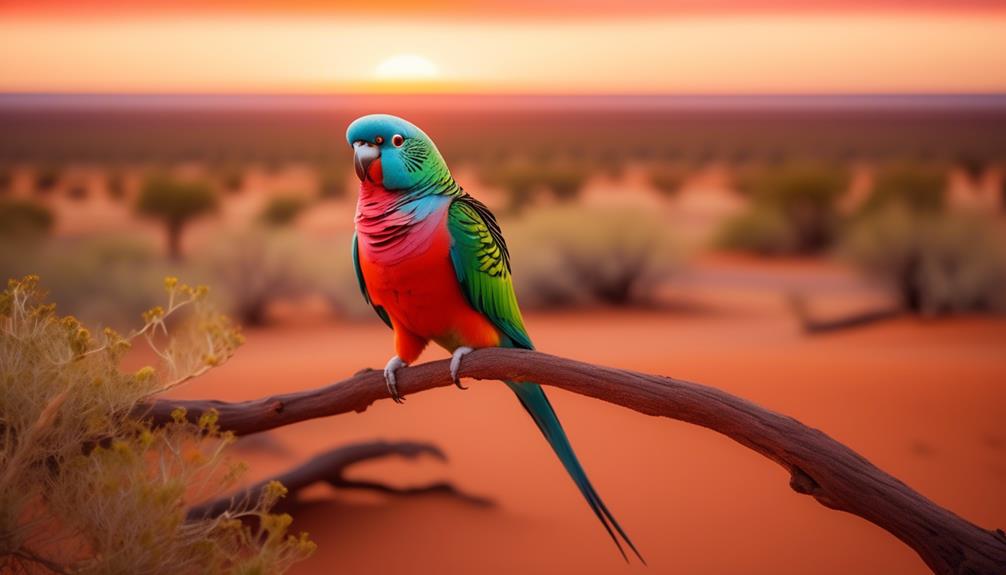
The native region and habitat of Bourke’s Parakeet are remote regions of Australia, specifically found in dry and arid areas with sparse tree growth. These charming birds can be found in areas of southern Queensland, New South Wales, and Central Australia. Discovered by Sir Thomas Mitchell in the 1830s, they’ve adapted to thrive in these harsh environments. However, their main dangers come from natural predators like feral cats and red foxes.
Bourke’s Parakeets are well-suited to their habitat, with their small beaks and zygodactylous feet allowing them to navigate through the sparse trees and arid landscapes. Despite the challenges they face, these dazzling pink beauties continue to enchant bird enthusiasts with their resilience and stunning appearance.
Physical Description
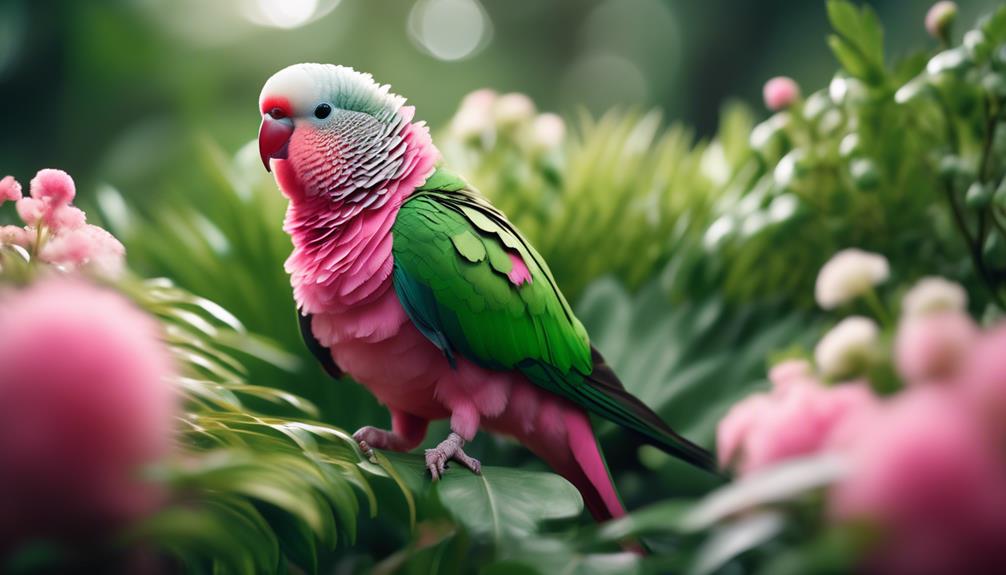
With an average length of 7 to 9 inches, Bourke’s Parakeets boast an impressive physical stature. These vibrant birds have imposing tail feathers that can reach up to 4 inches in size. They’ve small beaks and zygodactylous feet, which means they’ve two toes pointing forward and two pointing backward, enabling them to grasp objects easily.
Females are slightly smaller than males. Bourke’s Parakeets are known for their energy and love for flying. Their gentle chirps and tweets are appreciated by owners, and they aren’t noisy, making them suitable pets for apartments.
In terms of appearance, they’ve a dazzling and pretty rosy pink plumage, with additional brown and blue details. Males also have a light blue band above their beak. Captivity has resulted in new color mutations, such as yellow and light rosy pink, adding to their beauty.
Lifespan
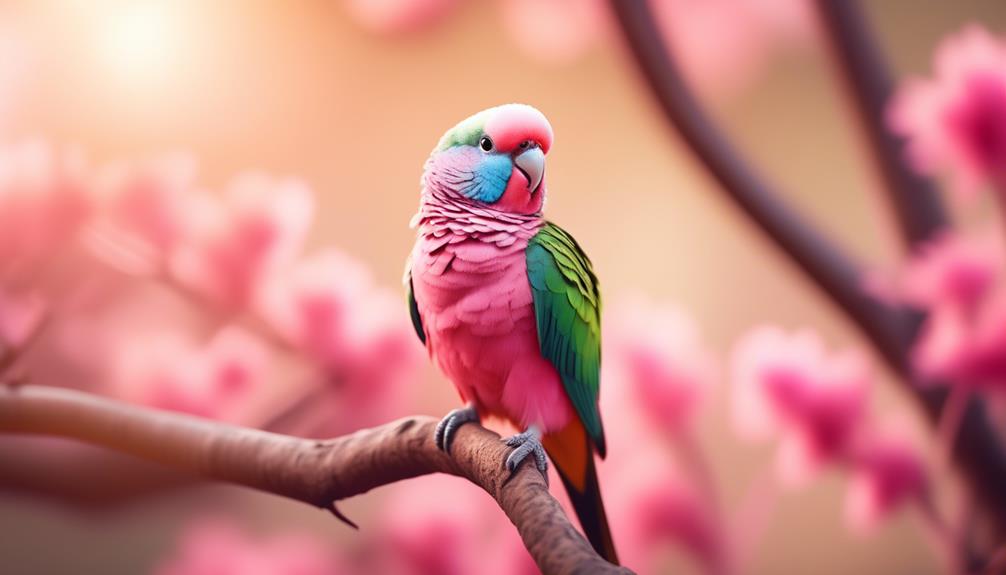
These vibrant parakeets have an impressive lifespan, living for 30+ years on average. Bourke’s Parakeets are known for their longevity, making them a popular choice for bird enthusiasts looking for a long-term companion. With proper care and a healthy diet, these beautiful birds can live well into their third decade.
Factors such as genetics, diet, and overall health play a crucial role in determining the lifespan of Bourke’s Parakeets. Regular veterinary check-ups, a balanced diet, and a spacious cage with plenty of opportunities for exercise can help ensure a long and healthy life for these stunning birds.
It’s important for potential owners to understand the commitment involved in caring for a Bourke’s Parakeet, as they can be a lifelong companion.
Bird Species
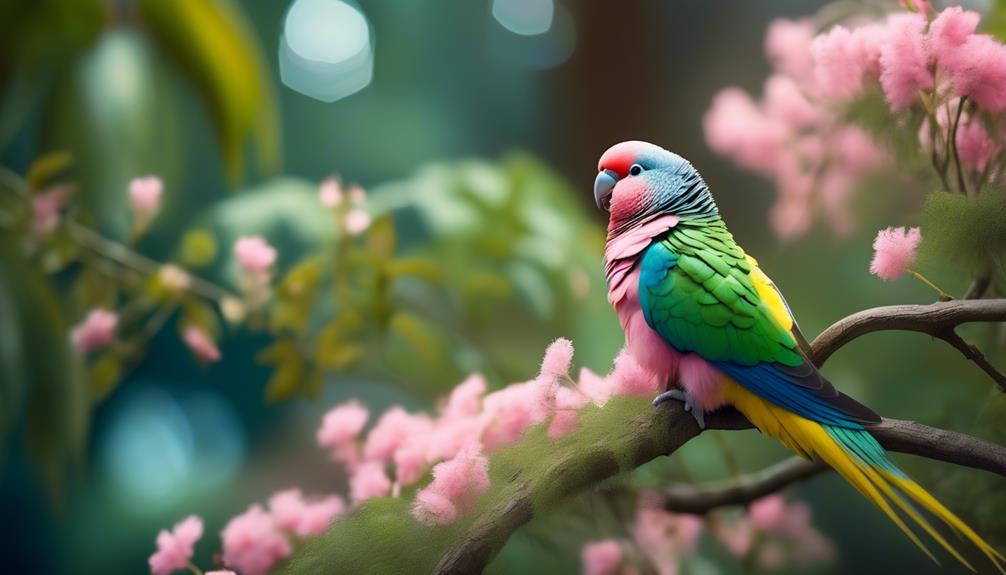
Bourke’s Parakeet, a vibrant and long-lived bird species, is native to the remote regions of Australia. Belonging to the parakeet family, these birds are known for their stunning beauty and captivating colors. With an average size of 7 to 9 inches, Bourke’s Parakeets have an impressive lifespan of over 30 years.
Discovered by Sir Thomas Mitchell in the 1830s, these parakeets inhabit dry and arid regions with sparse tree growth. They can be found in areas of southern Queensland, New South Wales, and Central Australia. Despite their small size, Bourke’s Parakeets have an imposing appearance, thanks to their long tail feathers, small beaks, and zygodactylous feet.
One of their most striking features is their rosy pink plumage, which has made them famous as Australia’s dazzling pink beauty.
Speech and Sounds
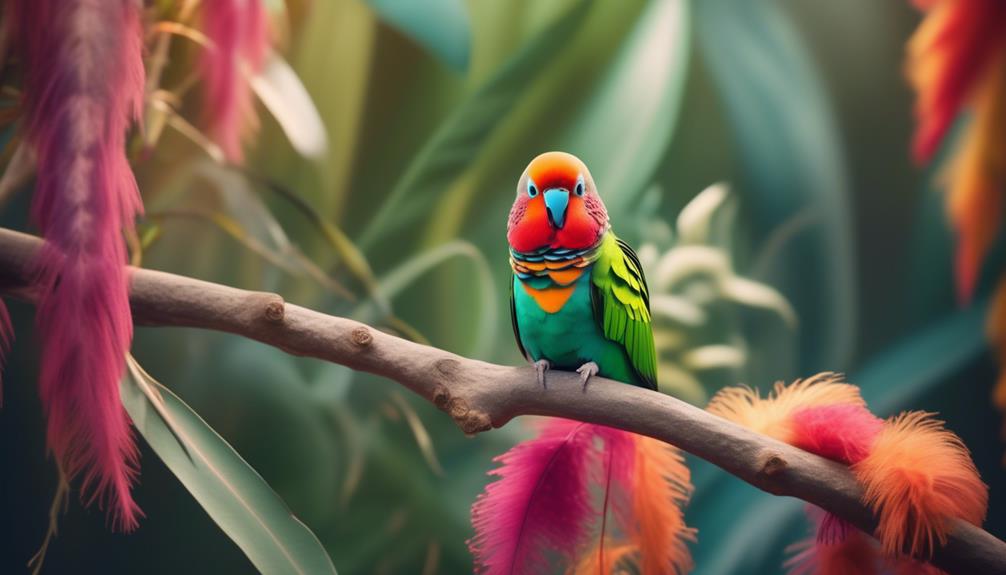
While known for their stunning rosy pink plumage, Bourke’s Parakeets also possess a gentle and melodious voice. These parakeets aren’t noisy and are appreciated by owners who live in apartments. They produce gentle chirps and tweets that are similar to those of Budgies. However, their natural calls are heard when they’re flying.
Bourke’s Parakeets aren’t known for their loud or harsh vocalizations, making them a pleasant addition to any home. Their melodious voice adds to their charm and makes them a favorite among bird enthusiasts. Whether they’re communicating with each other or simply enjoying their surroundings, Bourke’s Parakeets bring a soothing and pleasant atmosphere with their gentle sounds.
Colors
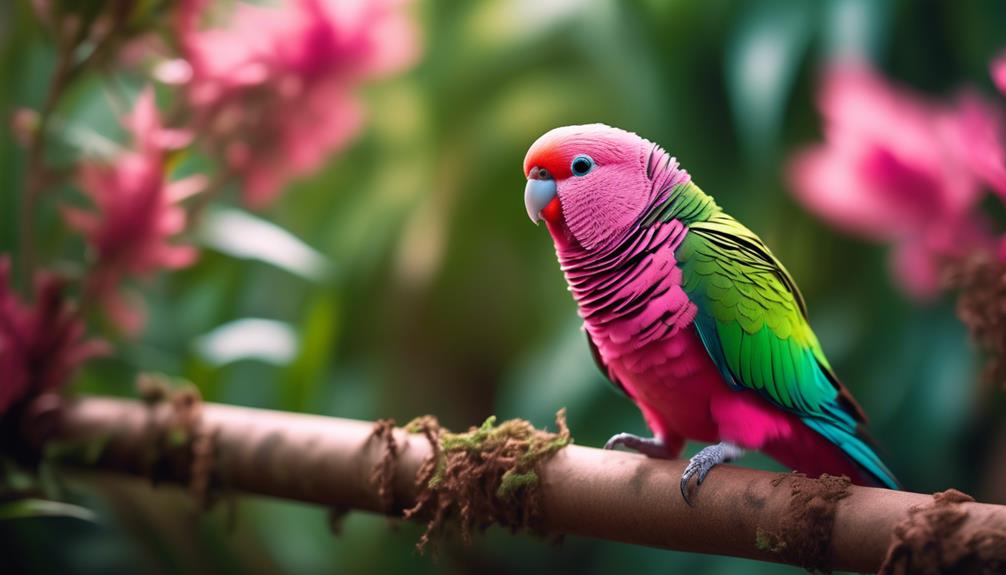
The rosy pink plumage of Bourke’s Parakeets is their most distinctive and well-known feature. Along with the rosy pink color, their natural coloration includes brown and blue details. Males have a light blue band above the beak, adding to their vibrant appearance.
In captivity, new color mutations have emerged, such as yellow and light rosy pink. These dazzling and pretty colors make them stand out among other parakeet species.
While the pink plumage is the most famous, it’s important to note the other colors that contribute to their overall beauty. Whether in their natural habitat or as pets, Bourke’s Parakeets captivate with their stunning array of colors.
Tail Feathers
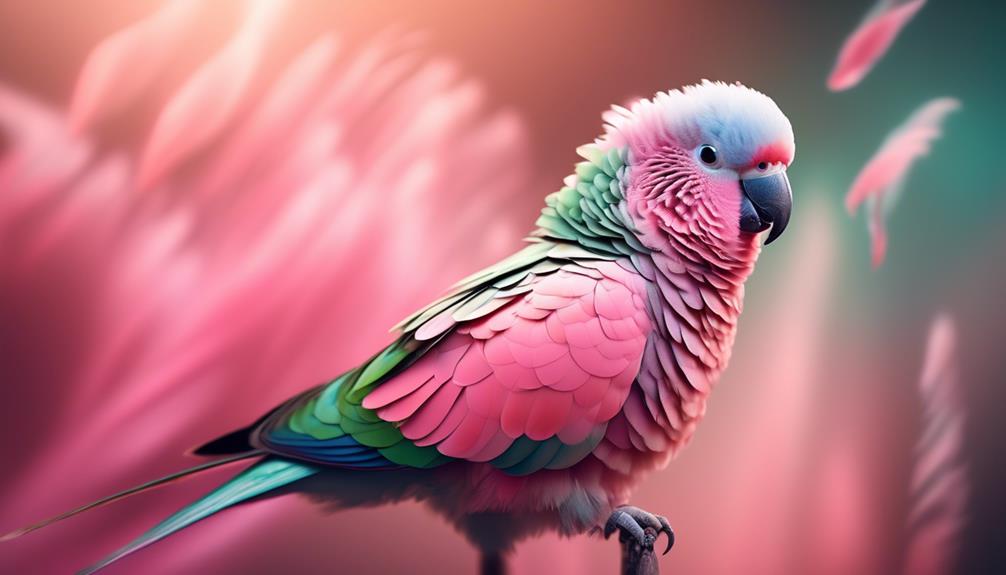
Their tail feathers are an impressive feature of Bourke’s Parakeets, reaching up to 4 inches in size. These long and elegant feathers add to the overall beauty of these birds.
The tail feathers are usually a combination of colors, including rosy pink, brown, and blue details. The males often have a light blue band above their beak, which further enhances their appearance.
The tail feathers not only serve an aesthetic purpose but also play a functional role. They help the birds maintain balance and control during flight, allowing them to maneuver swiftly through their natural habitat.
Additionally, the length and vibrancy of the tail feathers may serve as a visual signal for courtship and mating purposes.
Energy and Flying Abilities
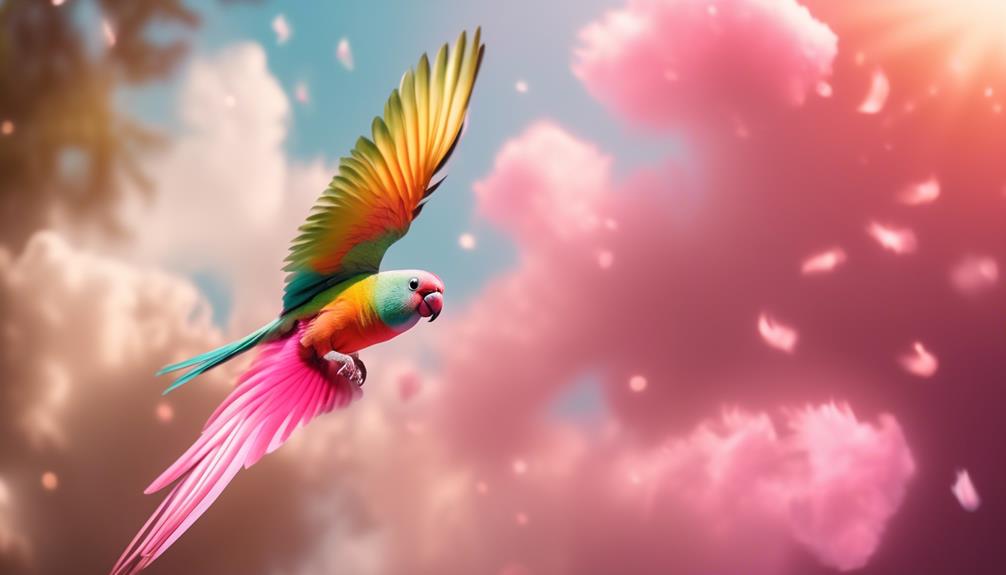
With boundless energy and impressive flying abilities, Bourke’s Parakeets are known for their agility and grace in the air. These charming birds possess several features that contribute to their exceptional flying skills:
- Wing Shape: Bourke’s Parakeets have long, slender wings that allow for quick and precise movements. This wing shape enables them to navigate through tight spaces and maneuver effortlessly in flight.
- Speed and Agility: These parakeets are incredibly fast flyers, reaching speeds of up to 30 miles per hour. Their agile flight patterns involve swooping, diving, and sharp turns, showcasing their remarkable aerial skills.
- Endurance: Despite their small size, Bourke’s Parakeets have impressive stamina. They’re capable of flying long distances without tiring, ensuring they can explore vast territories in search of food and water.
- Adaptability: These birds have adapted to their arid habitats, which often lack trees and perches. As a result, they’ve developed strong wing muscles and excellent balance, allowing them to hover and perch on precarious surfaces.
Frequently Asked Questions
What Is the Diet of Bourke’s Parakeet?
The diet of Bourke’s Parakeet consists of a variety of seeds, grasses, fruits, and vegetables. They also enjoy the occasional treat of insects. Providing a balanced and nutritious diet is essential for their health and well-being.
How Do Bourke’s Parakeets Communicate With Each Other?
Bourke’s Parakeets communicate with each other through gentle chirps and tweets, similar to Budgies. They also make natural calls while flying. Their communication style is not noisy, making them suitable for owners in apartments.
Are Bourke’s Parakeets Social Birds That Enjoy the Company of Other Birds?
Yes, Bourke’s Parakeets are social birds that enjoy the company of other birds. They thrive in small flocks and form strong bonds with their companions. Social interaction is important for their well-being and mental stimulation.
Can Bourke’s Parakeets Be Kept as Pets?
Bourke’s Parakeets can be kept as pets. They are social birds that enjoy the company of other birds. They have a gentle nature and are not noisy, making them suitable for apartments.
Are Bourke’s Parakeets Endangered or at Risk of Becoming Extinct?
Bourke’s Parakeets are not currently endangered or at risk of becoming extinct. However, they do face threats from natural predators such as feral cats and red foxes. Conservation efforts are important to ensure their continued survival.
Are Rose Ringed Parakeets Related to Bourke’s Parakeets and Do They Display Similar Behaviors?
Yes, rose ringed parakeets are related to Bourke’s parakeets, both belonging to the parrot family. They share similar behaviors such as forming strong pair bonds and exhibiting playful and social traits. When you meet the rose ringed parakeet, you’ll notice their vibrant colors and energetic nature, similar to Bourke’s parakeets.
Conclusion
In conclusion, Bourke’s Parakeet is a captivating bird species native to Australia. With its stunning rosy pink plumage and gentle chirps, it’s a beloved choice for bird enthusiasts.
These parakeets thrive in dry and arid habitats, and can live for over 30 years in captivity. Their unique color mutations, such as yellow and light rosy pink, add to their beauty.
Whether in the wild or as a cherished pet, Bourke’s Parakeet is a true delight.


